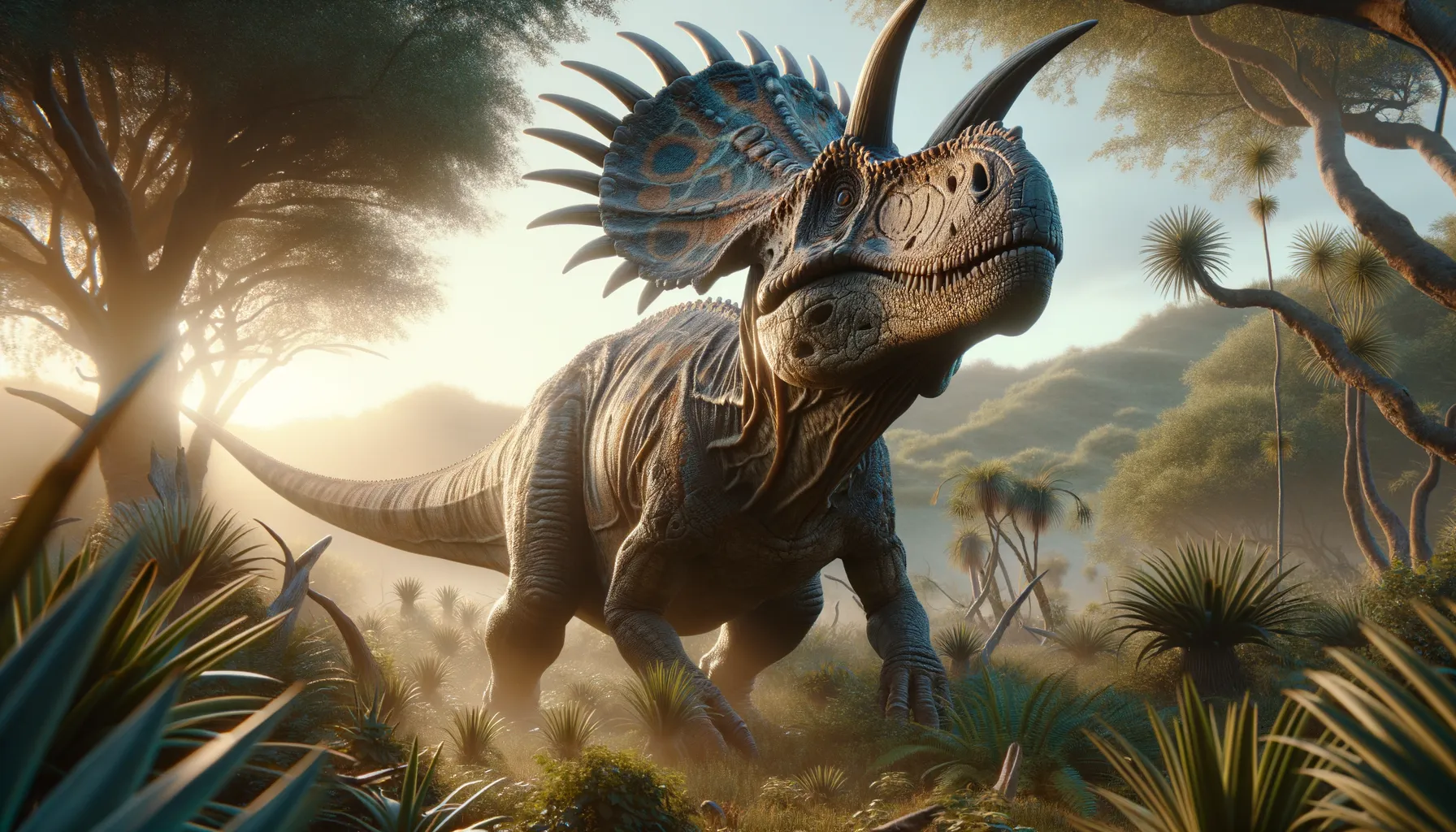
Ziapelta
The armored tank of the ancient world.
Period
Cretaceous
Length
Between 15 to 20 feet long.
Height
Roughly 4 feet tall at the hips.
Weight
Approximately 2 tons.
Ziapelta was an ankylosaurid dinosaur known for its heavily armored body and massive tail club. It roamed the landscape in what is now North America during the Late Cretaceous period. The bone structure of its armor and its distinctive cranial features make it a fascinating study of prehistoric life. Scientists continue to uncover new information about this intriguing dinosaur from its fossil remains, offering insights into its behavior, diet, and environment.
Diet
Ziapelta was herbivorous, primarily consuming a diet of low-lying vegetation such as ferns and shrubs. Its teeth were well-suited for grinding plants, allowing it to efficiently process tough, fibrous material.
Hunting
As a herbivore, Ziapelta did not hunt other animals. Its survival strategies were more defensive, relying on its formidable armor and tail for protection against predators.
Environmental challenges
Ziapelta lived in a world that was subject to significant climatic changes and environmental shifts. These changes would have affected its food supply and habitats, pushing it to adapt or migrate to new areas. Sea levels fluctuated during this time, impacting the landscapes of North America where it lived. Ziapelta likely faced challenges from both arid periods and lush conditions, with its adaptations crucial to enduring such fluctuations.
Speed
It moved relatively slowly due to its armored body.
Lifespan
Estimated to be several decades long.
First discovery
Discovered in 2014 in New Mexico, USA.
Fun Facts
- Ziapelta is an extinct dinosaur that lived about 70 million years ago during the Late Cretaceous period.
- It belonged to the group known as ankylosaurs, famous for their armored bodies and club-like tails.
- Ziapelta was first discovered in New Mexico, and its name means 'Zia shield', inspired by the Zia sun symbol from New Mexico's state flag.
- Unlike some other ankylosaurs, Ziapelta had distinctively large ornamentations along its skull, making it unique among its kind.
- The discovery of Ziapelta gave scientists new insights into the diversity of ankylosaurs in North America.
- Ziapelta's body armor was likely used for protection from predators, such as the large theropods that roamed its habitat.
- Fossils of Ziapelta helped paleontologists understand more about how ankylosaurs varied in different regions 70 million years ago.
Growth and Development
Ziapelta likely started its life as a small hatchling, growing steadily to reach its full size over several years. Juvenile Ziapelta would have had less developed armor, making them more vulnerable to predation. As it matured, its protective armor would have grown thicker and more pronounced, becoming a significant advantage in its adulthood. This growth process highlights the importance of its defensive features in survival.
Habitat
Its habitat consisted of lush, tropical environments with abundant vegetation. The diverse plant life would have provided ample food resources for this herbivorous dinosaur. Its geographical range likely included lowland floodplains and forested areas, offering both sustenance and shelter. These environments not only supported Ziapelta but also a myriad of other contemporary dinosaur species.
Interaction with other species
Ziapelta would have shared its world with a variety of other dinosaurs, both herbivores, and predators. It coexisted with large carnivorous dinosaurs who posed significant threats, relying on its armor for defense. It likely engaged in passive interactions with other herbivores, collectively grazing without direct competition. These interactions shed light on the complex ecosystems in which Ziapelta lived.
Natural lifespan
Ziapelta's natural lifespan was likely several decades.
Reproduction
Ziapelta likely reproduced by laying eggs, as is common in many dinosaur species. Its nesting sites would have been strategically chosen to provide safety and optimal conditions for egg incubation. Parental care is uncertain, but it might have involved some level of protection for the young hatchlings. This reproductive strategy ensured the continuation of the species despite environmental challenges.
Social behaviour
Ziapelta may have exhibited social behavior, perhaps moving in groups for greater protection. Group living could have offered advantages such as shared vigilance against predators and more efficient foraging. However, there is also the possibility of limited interaction outside of breeding or specific environmental conditions. Its social dynamics remain a topic of research and speculation.
Fossil locations
Fossils of Ziapelta have been primarily found in New Mexico, USA, within rock formations dating to the Late Cretaceous. These discoveries contribute significant information about its anatomy and ecology. The fossil records are crucial for understanding the distribution and habitat preferences of Ziapelta during its time. Ongoing studies continue to enrich our knowledge of this fascinating dinosaur through its preserved remains.
